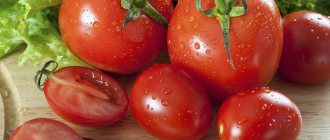How to properly prepare peeled onions for storage
In order to preserve all the benefits of the vegetable, you must perform the following steps:
- Wash all the peeled onion heads under running water, and then place them in a container with cold water.
- Place the container with water and onions in the refrigerator and replace the liquid with fresh liquid every 2 days.
- You can use a plastic bag as a container, which is also filled with fresh water every 2 days.
Cooked onions
Boiled, fried or baked onions should be transferred to an airtight container and placed in the refrigerator. This is best done within 2 hours after preparation. Onions keep their shelf life for about 3-5 days.
The money tree pleases with lush flowering: my secret is in caring for the leaves
A Brazilian travels 36 km by bike every day to take his loved one home.
It’s good to wash often: myths about shampoo and hair care that only harm
Methods for storing peeled onions
There are many ways to store a peeled onion in the refrigerator without losing its benefits.
To do this you can use:
- refrigerator;
- freezer;
- dryer
In a refrigerator
You can store peeled onions in the refrigerator in several ways:
- If you plan on short-term storage, you can send it in a tightly closed plastic container.
- You can store the bulbs in a container with water, provided that the liquid is regularly changed every few days, if the storage period is planned to be longer, for example, several weeks.
- The remaining small amount of product can be wrapped in cling film and also placed in the refrigerator. In this form, it will not lose its properties within 3–5 days.
- You can grease the cut half of the onion with fat or oil, and then put it in a cool place.
- The onion can be placed cut side down on a plate with salt, but in this case it should be stored for no more than a week.
- Onions can be pickled. For the marinade you will need to take a little salt, sugar and apple cider vinegar, and cut the product itself into rings. The marinade must be poured onto the bottom of the container, and after placing the chopped onion, it is hermetically sealed and placed on a shelf in the refrigerator, where it can be stored for up to 1 month.
In the freezer
To store in the freezer, it is recommended to finely chop the onion, after which the product is laid out on planks in a thin layer. In this form, it is sent to the freezer, and after the onion is completely frozen, it is packaged in zip bags, removing air from plastic containers.
To use a frozen product, you do not need to waste time defrosting it; the vegetable can be immediately used for cooking. Not only fresh products can be frozen. The peeled root vegetable, subjected to passivation, is also sent to the freezer as an original preparation.
Dried
This method allows you to preserve maximum benefits, and its advantage is ease of storage. Dried onions can be stored for a long time; in addition, the volume of the product is reduced by 10–15 times, which allows it to be folded into a fairly compact container.
For drying you can use:
In the process of preparing the product using this method, you should take into account the fact that onions emit a fairly strong, unpleasant odor, which children or people with sensitive mucous membranes may not like. So, you can move the electric dryer to the balcony or place it outside, or be sure to turn on the hood in the kitchen to improve ventilation and remove strong odors.
Preliminary preparation before drying involves:
- Cut into small pieces.
- Lay out the pieces in a thin layer on drying trays or oven trays.
- Drying at a temperature of +40. +50°C.
During the drying process, the product must be stirred so that it does not stick to the surface of the tray. It will take 3-4 hours for the onion to dry completely, after which it must be placed in containers where it will be protected from moisture.
For these purposes, you can use glass jars, canvas bags, or polyethylene with a zip lock. In order to speed up the drying process, the onions can be pre-dipped with boiling water and then dried in the oven at a temperature of +60. +70°C, and then lower the oven heating level and continue drying the product until the moisture has completely evaporated.
Store peeled vegetables in dried form
Dried onions will retain all the substances that the fresh root vegetable contains. Dried vegetables are stored much easier, unlike frozen ones: they take up minimal space in the house and will not spoil if the refrigerator stops working. The weight of dried products is approximately 10-15 times less than fresh ones.
Read also Flock for sofa upholstery
You can dry the root vegetable using different options:
- in the oven using a baking tray;
- in an electric dryer, spreading the chopped onions in a container in one layer;
- in a microwave oven, putting the vegetable in a special bowl and setting the desired mode;
- in the sun, in a well-ventilated area, placing the product on thin aluminum baking sheets or paper.
If you live in a wooden house with stove heating, then you can also dry peeled and chopped onions on a cooling stove. Consider the fact that during the drying process, this vegetable emits a not very pleasant and pungent odor, as well as fumes that can make your eyes water. Therefore, make the room where the onions are dried thoroughly ventilated. An electric dryer or portable oven can even be used on the balcony.
It is better to dry onions cut into rings. If possible, choose hard, strong onions for drying. The rings should be thin, no more than 5 mm, and additionally cut into 2-3 pieces.
Temperature is approximately 40-60 degrees. Periodically stir the onions placed on trays or baking sheets. The vegetable dries completely in 4-7 hours, depending on the type of drying. Do not exceed the temperature, as the overdried product may darken greatly. Properly dried onions should have a white or pink-purple color, depending on the variety.
The most convenient way to dry onions is in an electric dryer.
Dried onions will acquire a natural color with a golden tint if you hold them in cold and highly salted water before the process (about 40 g of salt per liter of water).
If you want to speed up the drying time, place the onions in boiling water for a few minutes before cutting them. Then dry in the oven at a temperature of 60-70 degrees.
After the onion has dried, you can chop it and place it in bags, plastic or metal cans. Store in a dry place. In this form, the vegetable will last for several years. It is used in food as a seasoning for various dishes.
Storage time for peeled onions
A peeled vegetable, if it has been cut and not used, can be stored at room temperature for no more than a day. If the onion has been chopped and not subjected to any heat treatment, then it will be useful for no longer than 12 hours.
If the onion skin has been removed and the product is left without its natural, protective coating, it should be used as quickly as possible to reap the full benefits, or stored properly following the instructions above.
How to prepare onions for storage at home
The basic rule for storing onions is that they must be absolutely ripe and dry. Therefore, it is removed from the beds only when the bulbs are fully formed. The indication that this has happened is the massive yellowing and lodging of the feather. Onion heads, which can already be harvested, acquire the shape and size characteristic of the variety. The necks become dry and thin, as do the integumentary scales. Onions that are unripe and have stood on the beds are not suitable for storage.
How to dry properly
When all the onions have been collected, spread them in an even layer on the beds to dry. Leave it there for a week until it completely dries out. The sun's rays will not only dry the onions, but also disinfect them. Turn the vegetables daily and cover the bulbs with film at night to protect them from night dew.
If the weather outside is rainy, you will have to dry the vegetables in a warm, dry, well-ventilated room. Spread them in a thin layer on the fabric in:
- barn;
- attic;
- summer kitchen;
- veranda;
- spare room.
Drying time is approximately 1-2 weeks. You can determine that a vegetable has dried by its outer scales, which should become dry, shiny and rustling. When turning the heads over, they should give in freely and easily. If this happens with force, drying must be continued. After drying, trim off too long roots and dry tops, leaving no more than 5 cm from the necks. If you are thinking of storing the heads in braids, the tops should be left on.
How to sort
After drying, sort the onions. For storage, leave only vegetables that are completely healthy, clean, without signs of disease or damage by pests, with tightly fitting scales. Set the rest aside and use it first for cooking.
It is also advisable to sort those selected for storage by size: large and medium ones are best stored separately from small ones.
And finally, separate the sweet varieties of onions from the spicy ones, which themselves last much longer.
3 Ways to Store Onions - wikiHow
Method 4: Selecting onions for storage Preparing onions for storage Preparing storage space Using stored onions
It is impossible to live without onions in the kitchen, and since they are stored well, they can be used all year round. If you grow and store your own onions, you can use them in your menu. Learn how to choose onions for storage and create the right conditions for storing them, as they retain their flavor and nutritional value for a maximum of ten months.
Method 1 of 4: Selecting Onions for Storage
- 1 Select onions harvested at the end of the season for storage.
The onions you harvest in the spring and summer are not hardy enough to store. It must be eaten within a few weeks of collection. Plan to store onions harvested in the fall, as they can last all winter. - If you grow your own onions, expect to store the onions you plant throughout the spring.
- Onions are ready to be harvested for storage in late summer or early autumn, when the upper part of the plant begins to lie down and dry out.Advertising
- 2 Save the hot onions.
Hot onions, unlike mild onions, contain sulfuric acid chemicals that make us cry when we cut onions, but which also help preserve onions through the winter. Mild onions do not have this self-preservation system, so they should be consumed within a few weeks of being harvested for long-term storage. The following varieties of bulbs are stored well in winter: - Yellow onions, such as "ebenezer", "yellow globe", "downing yellow globe", and "yellow globe danvers".
- White onions, such as "southport white globes". Only bulbs with small necks are selected for storage.
- Red onions, including "wethersfield" and "southport red globe".Advertising
Method 2 of 4: Preparing onions for storage
- 1 Dry the onions.
After the onions are harvested, lay them out to dry in a ventilated place so that the skins of the onions become tough. Don't tear off the leaves. Allow the onions to ripen for two to four weeks. - Dry onions in a dry place, away from sunlight. Sunlight can spoil the taste of onions and make them bitter. Lay out a tarp in your garage or shed. The room should be dry, warm and well ventilated.
- The onion is ripe when its stems are no longer green. The onion skin around the stem should dry out and tightly cover the entire onion.
- 2 Trim the onion.
Once the stems are completely dry, use sharp scissors or a knife to cut off the onion roots. - Discard any bulbs that still have green stems or that are small or damaged.
- Cut the leaves at least 1 inch above the bulb or leave them and weave them together.Advertising
Method 3 of 4: Preparing the Storage Space
- 1 Choose a cool, dark place to store onions.
It is necessary to maintain the air temperature in the storage area at about 4 - 10 degrees Celsius. Many people store their onions in a vegetable storage room or root cellar. If the storage location is too warm, the onions will begin to grow. If the storage location is too cold, the onions will begin to rot. - 2 Keep the storage area dry.
Onions easily absorb moisture, and if the air humidity is high, the onions will rot. Air humidity should be maintained at 65 - 70%. - 3 Make sure the area is well ventilated.
Allowing air circulation around the onions will prevent mold and rot. - For better ventilation, hang onions in mesh baskets, mesh bags or tights.
- If you decide to use tights for storage, tie knots between the bulbs. This way you isolate the bulbs from each other. You can also use string or bag clamps to separate the bulbs.
- 4 Try storing your onions in tights.
Yes, you heard right, in tights. Tie the bottom of the tights, place the onion in the sleeve and again tie the tights into a knot just above the onion. Then place the next onion in the sleeve and repeat until the sleeve is completely filled with onions. - This storage allows the bulbs to breathe. Any moisture they may have already come into contact with will quickly evaporate, thereby increasing the shelf life of the onions.Advertising
Method 4 of 4: Using Stored Onions
- 1 Use thick-necked bulbs first.
Thick necked bulbs are the oldest and will not last as long as younger bulbs. - 2 Inspect stored onions regularly.
Take a minute periodically to inspect the onion. Throw away any bulbs that have begun to rot. - You can eat bulbs that have begun to sprout. Just cut off the green part before using them in the recipe.
- If the onion is slimy or discolored, play it safe and don't eat it.
- Store extra bulbs for spring planting.
- 3 Store peeled onions in the freezer.
Chop the onions and place them flat on a baking sheet and freeze. Once the onions are frozen, remove them from the baking sheet and store them in the freezer in ziplock bags or storage containers. One disadvantage of this method is limited storage space. - 4 Wrap the remaining onions and store them in the refrigerator.
During cooking, part of the onion remains unused. To store these leftovers well for later use, wrap the onions in plastic wrap and place them in the vegetable drawer of the refrigerator. Advertising
- When storing, keep onions separate from potatoes. Onions absorb moisture from potatoes and spoil.
en.wikihow.com
Where to store onions at home or in an apartment in winter
There are 2 ways to store this vegetable in winter - warm and cold. Accordingly, method 1 involves storing vegetables in a warm room: an apartment or a house. The temperature should not exceed 22°C, and humidity - 60-70%. At temperatures and humidity above this value, onions will begin to sprout and quickly deteriorate. Both at home and in the apartment you can use the following methods.
Boxes
If there are a lot of onions, small plastic or wooden boxes can be suitable containers for them. They are breathable and easy to stack one on top of the other, thereby saving space in the room.
Wicker baskets
Wicker baskets are also suitable for storage. There will also be good air flow to the bulbs placed in them, but it will not be possible to install them one on top of the other, which is a disadvantage of this storage method.
Carton boxes
Large, sturdy cardboard boxes, such as banana boxes, can also be used to store onions. There are already holes in them, you can make a few more to improve air circulation.
Stockings or tights
This old proven method is suitable if you have a pantry or other room in which pantyhose filled with onions can be hung on the walls or from the ceiling. In your home, you can place them in the hallway if it is warm enough.
Bow braids
Another old way is to braid hair. Vegetables are stored in them no worse than in various containers. They are hung on the walls or suspended from the ceiling in the same closets, corridors or in warm utility rooms.
Grids
Regular small vegetable nets (up to 10 kg) are ideal for storing this type of vegetables. They are very light, breathable, they can be stacked one on top of the other and it is easy to monitor the condition of the stored product.
Paper bags and fabric bags
Both bags and bags allow air to pass through perfectly, but do not allow light to pass through, so small onions and sets can be kept in such containers. The main thing is not to put too much onion in them; it is enough that each one contains about 2-3 kg.
From the video you can learn tips when it’s time to harvest onions and how to preserve them in your apartment until spring.
To preserve peeled onions properly
- Do not leave peeled and chopped onions in a warm room overnight. It accumulates harmful substances and becomes hazardous to health. This is what ancient Jewish scholars believed.
- It is permissible to keep the onion in a vegetable drawer without water and cling film for more than a day, and then use it or throw it away. On the second day, the onion will lose its vitamins, color and aroma.
- When storing, keep any onions separate from the potatoes. It can deteriorate by absorbing moisture.
- If you know in advance that you will only need half an onion to prepare a dish, then do not peel it completely. Thus, the remaining part will not spoil if you use the method of storing it in a plate with salt.
Proper storage of a product such as onions will allow all the beneficial properties and vitamins to remain inside it. Using already prepared vegetables, you will get many tasty and healthy dishes, and the housewife will save time on preparing them.
- View the full imagePeeled onion
Rules for preparing onions for storage
Methods for storing peeled onions
Is it possible to store peeled onions in the freezer?
Preparing and storing dried onions
Other ways to store peeled onions
Composition and beneficial properties of onions
Harvesting vegetables is half the battle, but preserving them for consumption during the winter is difficult. When properly prepared for storage in the fall, onions will remain juicy and will not rot until the next harvest. Bulbs are stored for a long time in well-ventilated areas with an air temperature of one to two degrees Celsius.
Any vegetable crop is preserved better if it has been properly cultivated. During wet summers, it is important that the bulbs are not wet. Therefore, during the rainy season, it is better to cover the beds with covering material to protect them from excess moisture. Damaged bulbs should also not be left over the winter. Sometimes there is a lot of onion left over that needs to be used quickly. This is where the method of storing peeled onions comes in handy.
How can you store onions in a cellar or basement for a long time?
Residents of private houses can store onions in underground storage facilities, but only if they are dry and equipped with an exhaust hood. A damp cellar is not suitable for storing these vegetables - in a cold, damp place the vegetable may begin to rot. The temperature in the cellar should not rise above 0-3°C, humidity - above 60-70%.
If there are not many onions and there is enough space in the cellar, you can simply lay them out on the shelves in a thin layer.
To disinfect onions, you can sprinkle them with crushed chalk or ash (200 g for every 10 kg of vegetables), and to reduce humidity, place containers with lime or small shavings in the cellar, or scatter them on the floor. The accumulated husks should also not be thrown away - they protect the vegetable well from waterlogging.
Whatever method of storing onions you choose, regularly (at least once a month) review and sort through the vegetable in order to promptly detect rotten, sprouted, soft or shriveled ones.
Whole (in husk)
It is best to store onions in their skins in a dark, dry place with good ventilation. The air temperature should be from 7 to 12 degrees. A great place to store bulbs would be a garage, basement or pantry. You should not leave this vegetable in a plastic bag, as it requires a sufficient amount of air.
In addition, you should not store onions for too long in the refrigerator or in a warm place, for example, near a radiator or next to the stove. Unpeeled vegetables in the husk are well preserved for several months. However, this largely depends on how high-quality, dry and fresh the onions were when you bought them.
How to store peeled onions in the refrigerator
For vegetables, the refrigerator has a special compartment in which you need to keep the vegetable. It is preserved remarkably well, the only “but” is that the box for vegetable products is small and cannot accommodate a large number of heads.
You can increase the volume of onions stored in the refrigerator by peeling them, washing them, placing them in a large container and filling them to the top with cold water. The water will need to be changed every day or at least once every couple of days.
Anyone, even a novice gardener, can save onions until spring. Choose any of the recommended methods or several at once and your vegetables will remain as fresh and tasty throughout the whole winter as fresh from the garden.
Chopped onion
Just like a peeled onion, the chopped vegetable should be stored in the refrigerator in an airtight plastic container or ziplock bag.
Since chopping this vegetable releases more moisture, which can lead to faster bacterial growth, it is best to use a container with drainage holes. This will help get rid of excess moisture.
In this form, the vegetable can be stored well for a week. This will help you simplify and speed up the process of preparing many dishes.
How to properly store onions in winter at home?
Onions are a healthy vegetable that can be consumed evenly throughout the year due to the possibility of long-term storage. Successful storage is impossible without satisfactory harvest quality and compliance with certain conditions.
That is why the main question arises, especially in winter: where and how to store onions at home, how to properly prepare them.
How and when should you harvest?
It is important to harvest onions and leeks correctly and on time:
- If harvest is delayed, we experience an increase in yield causing deterioration in bulb quality, including cracking and peeling of the scales, leading to losses during storage. Larger bulbs do not dry out well enough to store.
- Before harvesting, the bulb can become infested with pathogenic fungi and bacteria, and as a result, the vegetable begins to rot.
Garlic and onions ripen in July. The optimal harvest date occurs when the plant stem falls by 3/4, and half of the leaves of the remaining plants are still green, but dry bulb scales are visible. When the stem falls to 1/3 of its height, you need to stop watering the vegetable (about 2 weeks before digging).
Do not pull the bulbs out of the ground by force; they must be dug up, otherwise injuries to the bottom are inevitable.
After harvesting, the bulbs are dried in a sunny place (usually this occurs in mid-July). Drying is carried out directly on the beds, if there is no rain, in case of rainy weather - under canopies.
In the field in the morning, the crop is covered to protect the bulbs from falling dew. Drying lasts approximately 2 weeks. Thus, the crop will dry well, the skin will harden, and acquire a characteristic color depending on the cultivated variety:
You can't pick onions in the rain. If it starts to rain while the vegetable is drying in the garden, you must immediately move it under the roof.
Preparing onions for long-term storage
The onions need to be dried again. The harvest is dried under a canopy or in a utility room.
After the initial drying, the bulbs are brought into sheds and other rooms where the further drying process takes place. Usually only warm outside air is used. Sometimes additional air heating is used, especially during periods of wet and cool autumn. The drying period of the bulbs lasts 2-3 weeks, depending on the degree of drying in the open air, in the garden.
At the end of October, onions are prepared for storage for the winter. You need to sort through the harvest, throw out any bulbs that have mold or rot.
Tomato garnisher without cooking
The recipe requires the following ingredients:
- red tomatoes – 1 kg;
- horseradish root – 80 g;
- garlic – 60 g;
- ground red pepper – ½ tsp;
- sugar – 1 tsp;
- salt – 3 tsp.
- Remove the skins from the tomatoes and grind.
- Grind the horseradish in a meat grinder, and grind the garlic through a press.
- Combine ingredients, add spices, mix.
- After 1-2 hours, pour the freezer for the winter into sterile jars and seal tightly with metal lids.
Interesting: Is it possible to cook diet eggs after 7 days of storage?
Storage conditions
The key to the safety of the harvest is compliance with the onion storage conditions:
- cleanliness of containers and premises;
- temperature regime;
- air humidity;
- ventilation.
At what temperature and humidity should onions be stored?
The optimal conditions to help preserve the harvest are as follows:
- onion storage temperature – 0 ° C;
- relative air humidity 65-75%;
- atmospheric air composition: 5% CO2, 3% O2.
Very good results are obtained when storing vegetables at ultra-low concentrations of oxygen and carbon dioxide (1-2% CO2, 1.5-3% O2).
Important! Onions can be stored at sub-zero temperatures (frozen). It is important to maintain a constant temperature of -2 to -3 ° C. The shelf life of frozen onions is 8-12 months.
In our climate, these requirements are met by storing the bulbs in a well-insulated room, skillfully using the cool outside air for cooling.
Shallots can be stored until June. Onions are usually tasty until February-March, when they begin to sprout.
Attention! If the onion is frozen, after thawing it is suitable for consumption.
If you need to extend the shelf life of onions until May-June, then they should be stored in special refrigerators at 0 degrees C, maintaining a constant temperature and humidity.
It is important not to let the onions sprout
It is extremely important to store the vegetable, maintaining its adequate condition - not allowing it to sprout.
How is it harmful for roots and feathers to sprout?
Activation of the germination process leads to increased storage losses. Large losses are mainly due to root growth.
The quality of the vegetable decreases as the following changes occur:
- dry scales covering the fleshy husk crack;
- color changes;
- the shape and hardness of the bulbs changes.
Reasons for root sprouting
- Bulb quality . Low-quality bulbs are susceptible to root and feather sprouting during long-term storage, which is 6-8 months in pantries and cellars.
- High air humidity and temperature . The conditions existing in cellars and basements can have a very negative impact on the quality of the vegetable. Root germination is caused mainly by high relative humidity in the room and stem growth at elevated temperatures.
The germination process in industry is prevented and limited using appropriate drugs from the group of plant growth and development regulators. The active substance in these formulations is most often a pesticide - maleic acid hydrazide (MHA) in the form of potassium salt - (800 g / kg). These drugs are characterized by a systemic effect, prevent the growth of shoots, but they are toxic, requiring caution when using and observing the waiting period when eating onions.
At home, such preparations are usually not used; gardeners try to grow environmentally friendly crops, so it is very important to store the crop under the right conditions.
Step-by-step instruction
How long the onion will stay there without spoiling depends on the form in which the onion will be stored in the refrigerator.
Whole Unpeeled
Convenient to use for storing unpeeled onions in the refrigerator:
- Egg trays - in them each onion will lie separately from the others. There is no need to cover them somehow, because onions in the peel have almost no smell.
- Open paper bags in which the bulbs are placed in a thin layer.
The onions will last about two months in such containers.
Procedure:
- Peel the top layer of husk (by no means all!).
- Place the bulbs in a paper bag or egg cup.
- Place on the bottom shelf of the refrigerator or in the vegetable drawer.
Purified
Housewives often need to preserve peeled onions. It's convenient for cooking - no need to clean. To prevent it from drying out and deteriorating:
- The bulbs are thoroughly washed and placed in a plastic bag or hermetically sealed container (glass or plastic).
- Pour 0.5 cups of cold water into it.
- Every 2–3 days, the water is poured out and replaced with fresh water.
Advice
In this way, onions can be preserved for three weeks.
Sliced
If you have already peeled or chopped the onion, you can also store it in the refrigerator. To prevent it from wilting, there are several ways:
- grease the cut with vegetable oil, place on a plate cut side down, close with a lid (to avoid smell) and place on a shelf;
- pour cold water into a bowl or deep plate so that it completely covers the onion, and change it every two days;
- wrap the onion in cling film - stored for 4-5 days;
- Pour salt into the bottom of the bowl and place the onion cut side down - it will keep for 7 days.
Fried
Fried onions can be stored in the refrigerator for several days and in the freezer for up to a year. For this:
- Fry the onion with plenty of vegetable oil.
- Place in plastic bags and seal them tightly.
- Place in the freezer.
Advice
When using frozen fried onions, do not defrost them, but immediately add them to soup or other dish you are preparing. Onions from the freezer have an original taste, and they are also very aromatic.
Onion diseases that occur during storage
Neck rot of onions
According to ten years of research, losses due to onion rot are mainly caused by neck rot. The disease is caused by: Botrytis aclada, B. squamosa, B. Byssoidea. Symptoms of infection become visible during storage of the bulbs, which begin to rot from the neck. A gray mycelial coating appears in areas of infected tissue.
Main sources of infection:
- infected set seeds;
- plant debris;
- contaminated soil.
The development of the disease is promoted by high humidity and subsequent collection of wet bulbs. The occurrence of disease can be reduced by maintaining the recommended temperature and humidity during storage. It is also advisable to minimize sources of primary infections:
- do not allow bulbs to be grown in one place for the second year in a row;
- sowing healthy seeds.
Fusarium
High intensity onion rot is caused by the fungus Fusaria (Fusarium oxysporum). The disease usually occurs in areas where vegetables are grown on an industrial scale without following technology. The fungus infects the bulbs during the growing season. Symptoms during storage are visible in the form of rot on the heel side.
The causative agent of the disease spreads through:
- contaminated water;
- soil;
- with seed material.
To prevent the development of the disease, you need to avoid growing vegetables in monoculture and in waterlogged soils. It is advisable to sow high-quality seeds. When harvesting, you need to avoid mechanical damage and store only healthy vegetables.
White rot
White rot exhibits similar symptoms. A distinctive feature of the disease is white, cottony mycelium with numerous sclerotia.
Prevention is based on compliance with the rules of cultivation, drying and storage. Seed treatment is also an effective method of protection.
Wet bacterial rot
Large losses during storage are caused by rotting of onions, provoked by the appearance of bacteria pseudomonas (Pseudomonas gladioli pv. Allicola) and erwinia (Erwinia carotovora). Onions become infected during the period before harvest through an under-dried neck due to mechanical damage. Tissue with symptoms of the disease becomes watery, acquires an unpleasant odor, and rots. Vegetables intended for storage must be healthy.
Conclusion
Every summer resident who has harvested his harvest is concerned with the question of how to preserve onions in winter. The crop belongs to the group of vegetables that, thanks to optimal conditions, can be stored for a long time. However, improperly implemented agrotechnical measures, including poor plant protection, can lead to crop loss during storage. The most important parameters are maintaining a constant low temperature and a humidity level not exceeding 80%. Equally important is proper preparation for storage - drying, compliance with cleaning rules.
Sources:
https://fermer.blog/bok/ogorod/luk/hranenie-luka/7650-kak-hranit-ochishhennyj-luk.html https://rufazenda.ru/kak-hranit-luk.html https://wiki- dacha.ru/kak-hranit-repchatyy-luk











